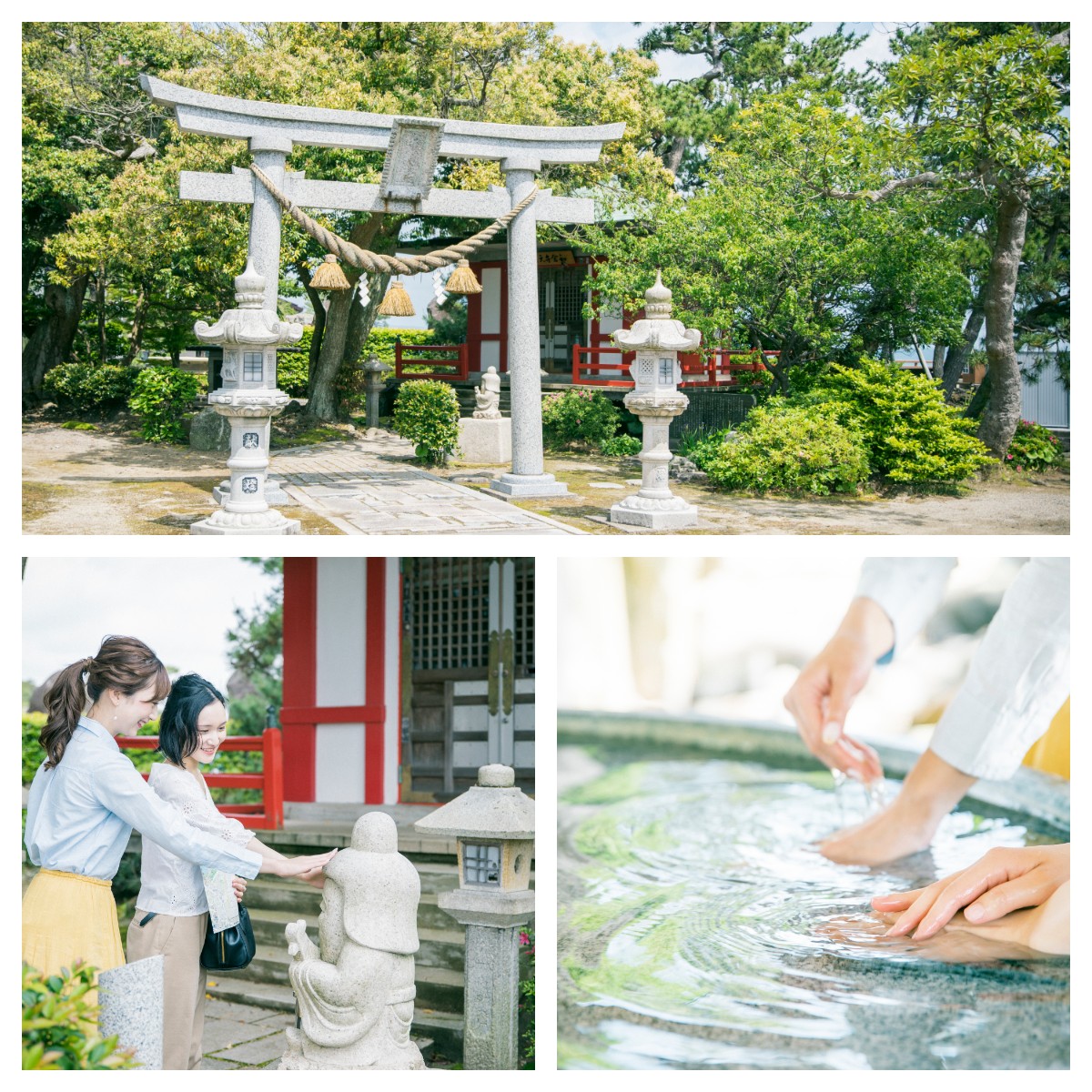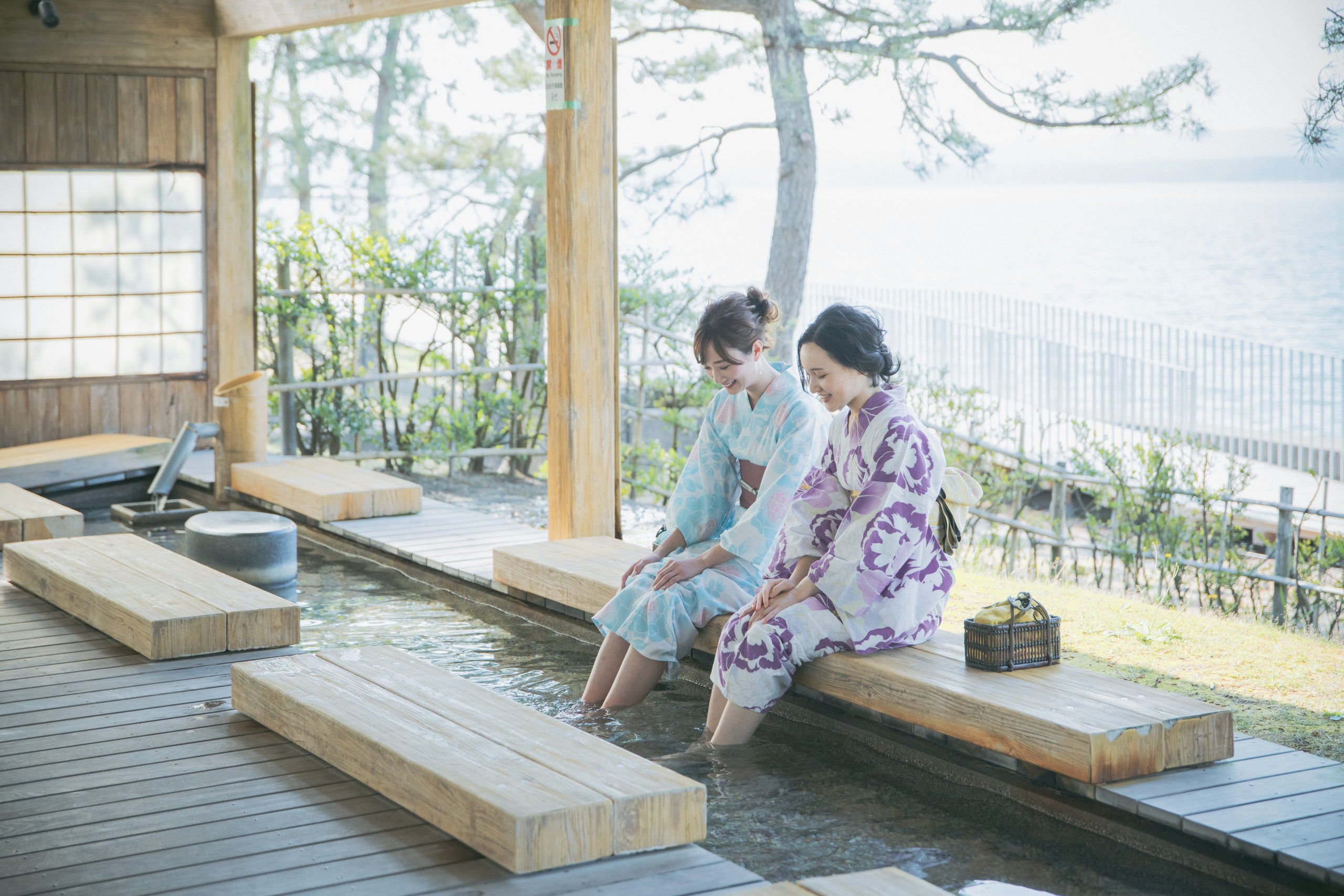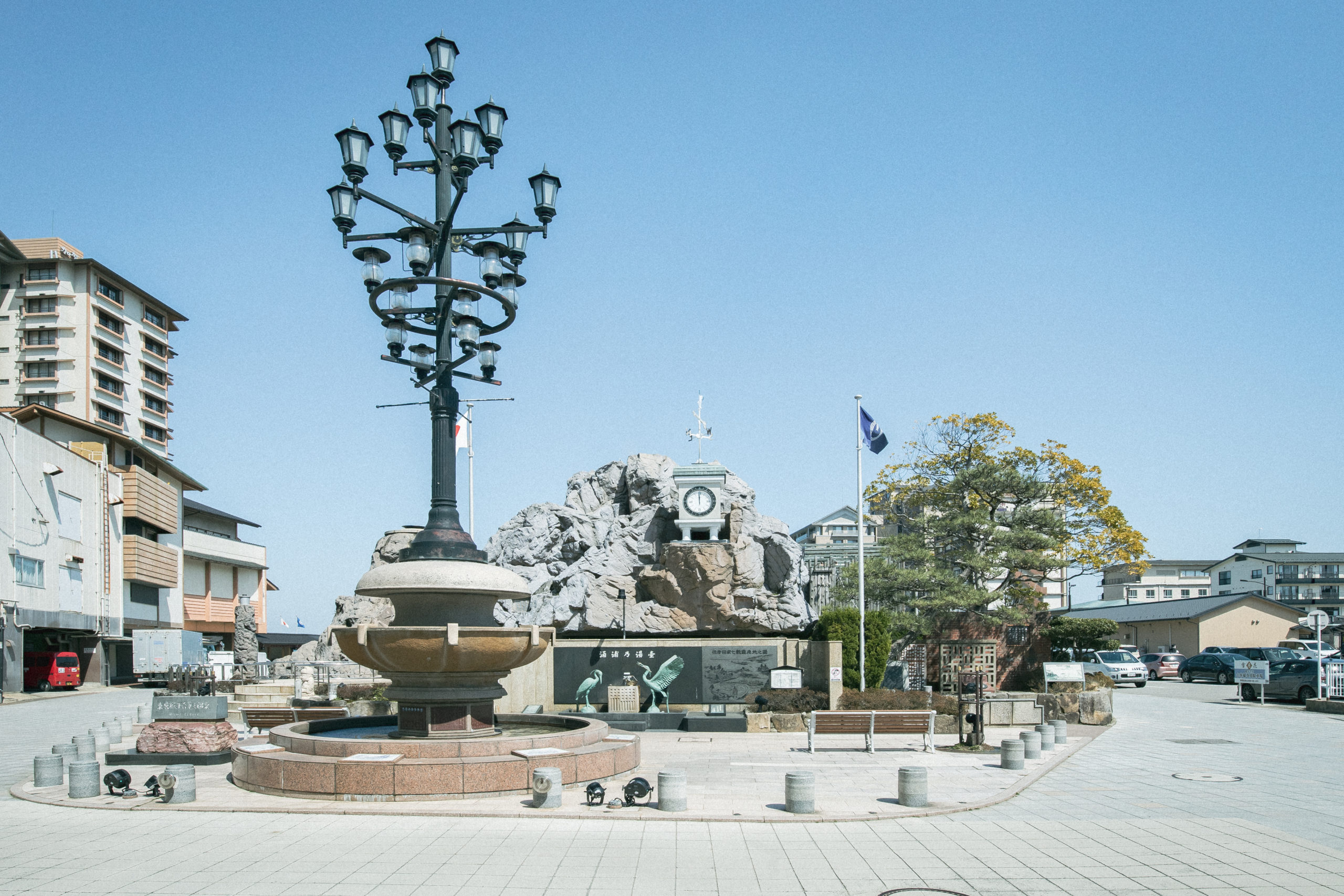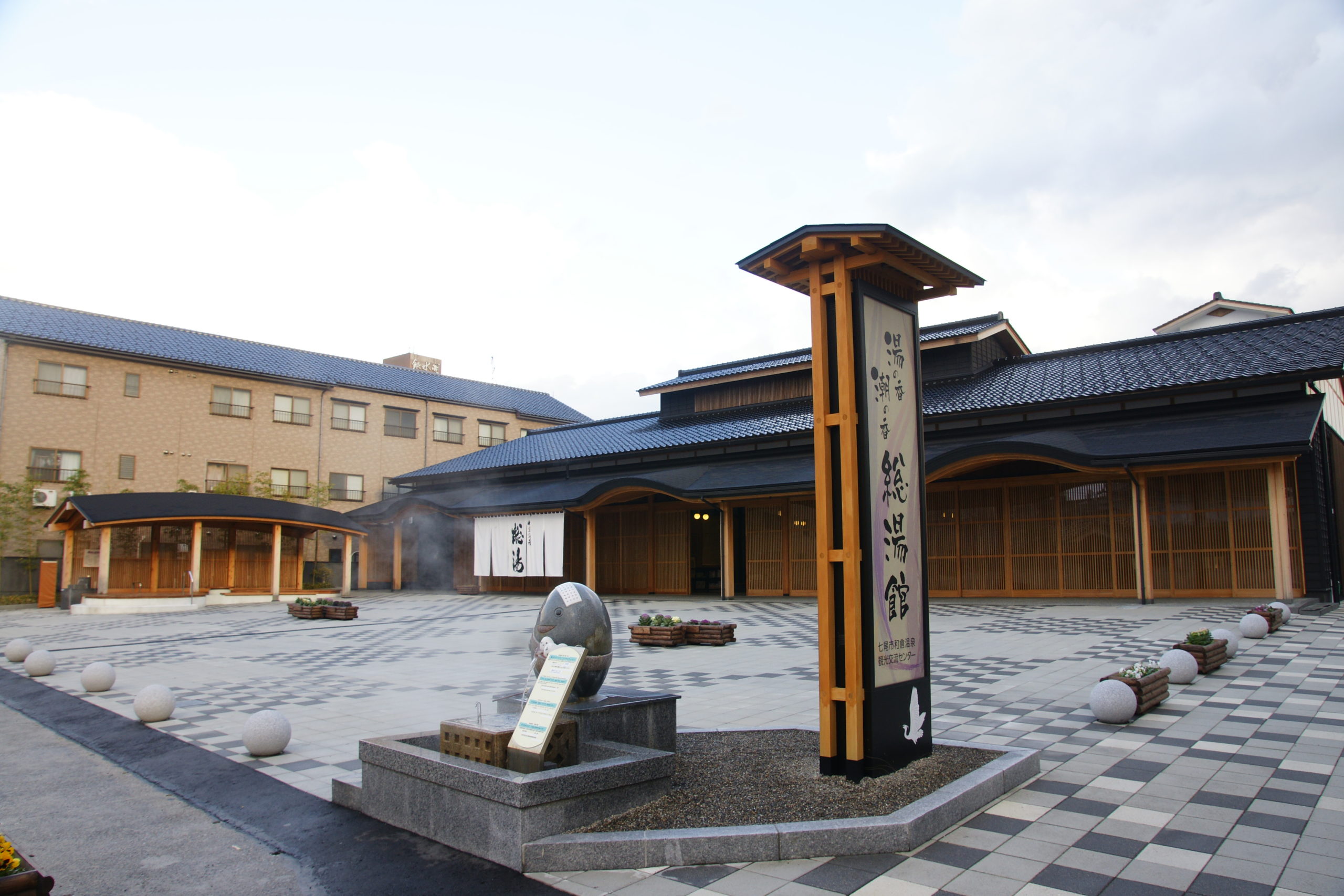Seirinji Temple
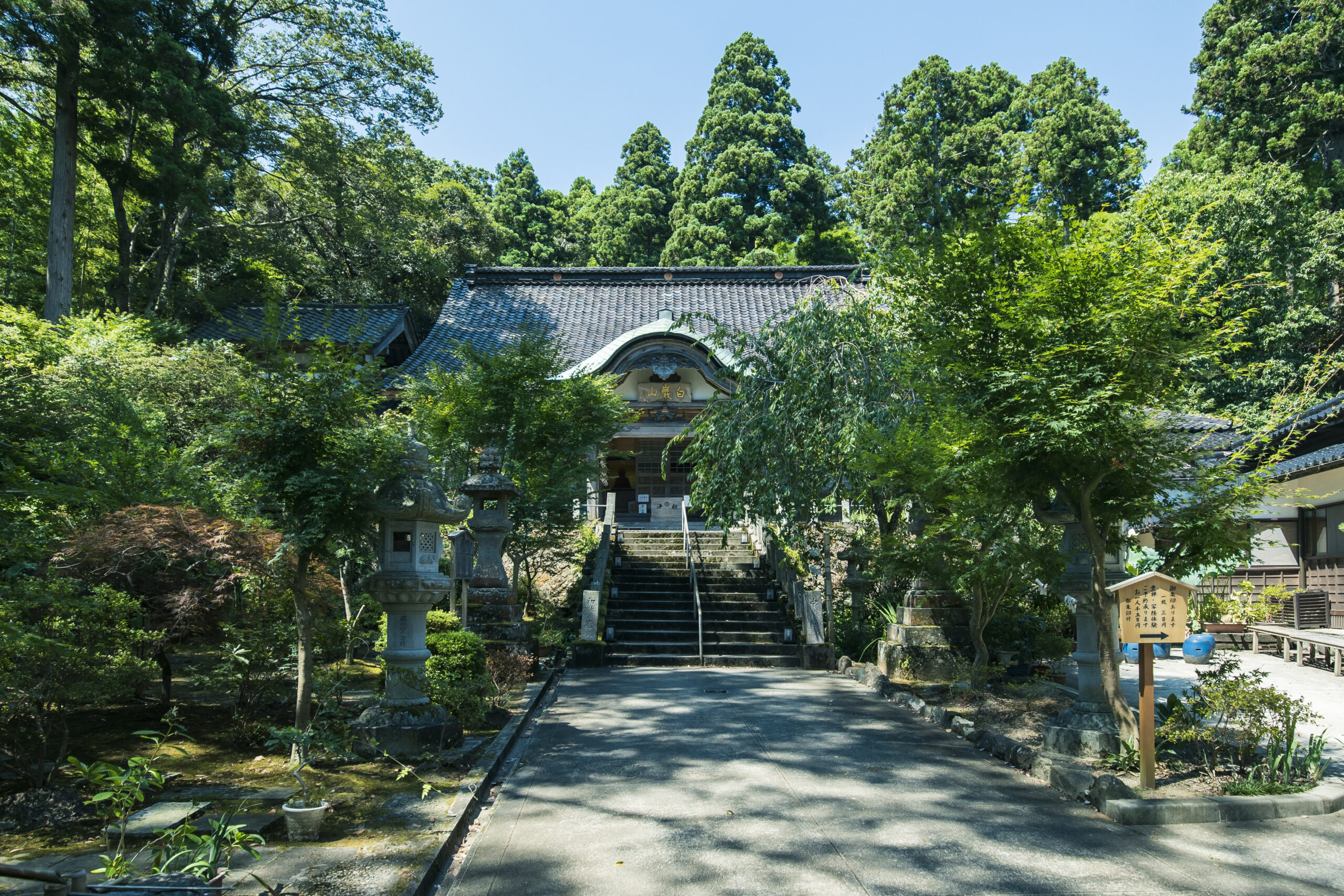
Seirinji Temple Imperial Rest House
For a few hours on September 27, 1909, Crown Prince Yoshihito (1879–1926), who reigned as Emperor Taisho from 1912 to 1926, retreated to an elegant rest house in Wakura Onsen to relax, eat lunch and take a bath. He then continued his 11-day tour of Hokuriku (Fukui, Ishikawa, and Toyama prefectures). Over several years, the Crown Prince made official visits to all of Japan’s prefectures. Construction of the imperial rest house (gobenden) started two years earlier in anticipation of his visit. It cost around ¥100,000 at the time.
The gobenden was originally built on a hillside overlooking Nanao Bay. Such rest houses were originally built for the imperial family to relax for a few hours as they traveled around the countryside on official business. Most were built for a single visit and dismantled afterward. The buildings comprising the Wakura Onsen gobenden (the rest house and an antechamber for attendants connected by a corridor) remained in their original location until 1976 when they were moved to nearby temples.
The rest house has two rooms with tatami mat flooring, with an enclosed engawa veranda on two sides. A raised section of flooring was the Crown Prince’s private quarters, which could be shielded from direct view by a fine bamboo screen or wholly enclosed with sliding wooden panels.
The gobenden was constructed of the finest materials, fit for a future emperor. Much of the wood is cypress from Imperial Household Agency forests in the Kiso valley of Nagano Prefecture. The main room has a coved and coffered ceiling of Japanese horse chestnut panels with a distinctive tiger-stripe pattern (torafu). The decorative grain patterns indicate both the high quality of the timber and the skill of the carpenters.
Some of the original furnishings have been preserved. Since the gobenden was registered a Tangible Cultural Property in 2017, it has become a popular place to visit in Wakura Onsen. The temple holds seasonal events such as garden illuminations.
Seirinji Temple is open daily from 9:00 a.m. to 12:00 p.m. and 1:00 p.m. to 4:00 p.m. (Closed on Thursdays.)
back

